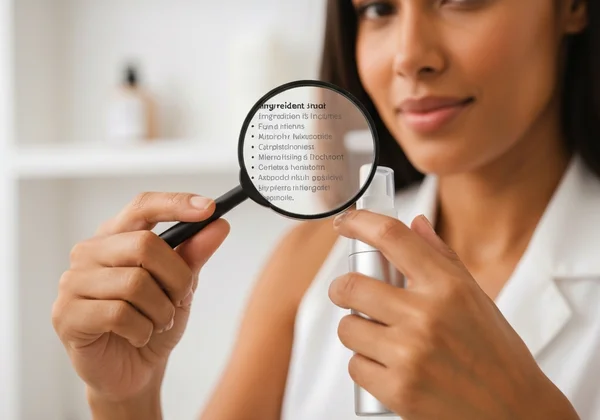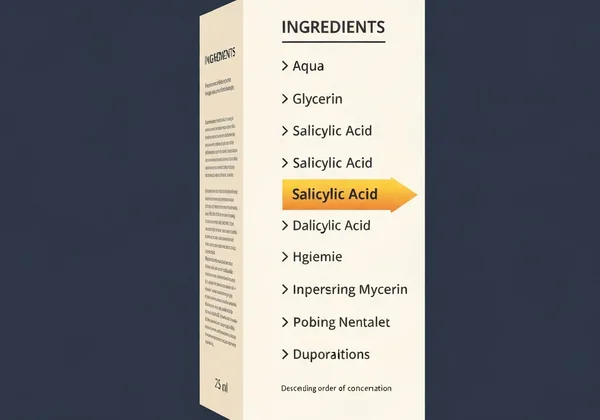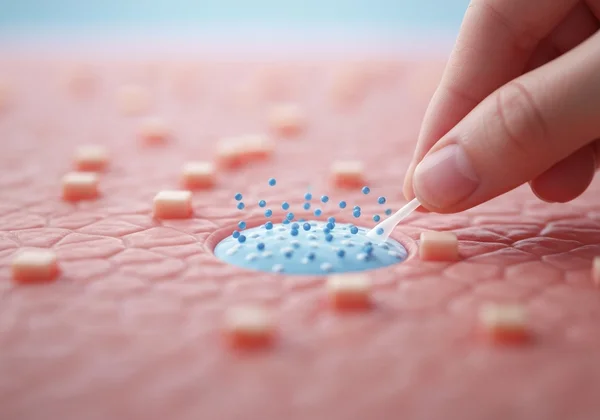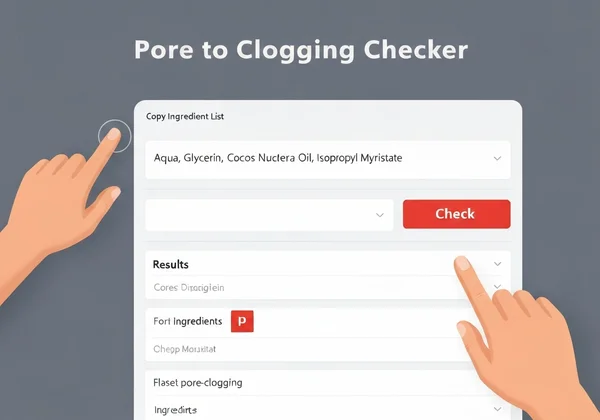Decode Skincare Labels: Identify Pore-Clogging Ingredients with Our Expert Guide
Feeling overwhelmed by the cryptic ingredient lists on your skincare products? You're not alone. That wall of text can feel impossible to crack, but this guide is your key to becoming a confident ingredient expert. We'll teach you how to decode product labels, identify the good, the bad, and the just plain unnecessary, empowering you to make smart choices for a clearer, healthier complexion. How can I quickly check if a product is pore-clogging? The answer is simpler than you think.
Understanding your ingredients is the first step toward taking control. It’s time to move past marketing hype and get to the facts. By the end of this guide, you'll have the knowledge to read any label confidently and the perfect comedogenic ingredient checker to make it effortless. Let's dive in.

Decoding Your Skincare Ingredient List: The Ultimate Pore Clogging Ingredient Guide
To spot potential troublemakers, you must first understand the rules of the label. Every cosmetic product follows a global standard, and mastering these basics gives you an immediate advantage.
The INCI Standard: What Those Scientific Names Mean
The strange, unpronounceable names on your labels are part of the International Nomenclature of Cosmetic Ingredients (INCI). This standardized system is used worldwide for transparency. For example, water is "Aqua," and shea butter is "Butyrospermum Parkii (Shea) Butter." While these INCI names look intimidating, they are universal scientific identifiers, ensuring a brand can't hide an ingredient behind a proprietary name. You don’t need to memorize them; just recognizing the system is the first step.
Understanding Ingredient Order: Potency and Priority
The most important rule: ingredients are listed in descending order of concentration. The highest quantity appears first. This gives powerful insight into the product formulation. If a great ingredient like Hyaluronic Acid ("Sodium Hyaluronate") is listed near the end, there’s very little of it. Conversely, if a potentially irritating ingredient is near the top, it's a major component. This rule helps you gauge a product's true character.

Key to Understanding Skincare Ingredients: Actives & Excipients
Not all ingredients are equal. They fall into two main categories: "actives," which do the work, and "excipients," which support the formula. Distinguishing between them is crucial to understanding what a product will do for your skin.
Spotting Key Actives and Their Benefits for Your Skin
Active ingredients are the powerhouses of your skincare, included to target specific concerns like acne, wrinkles, or hyperpigmentation. These are the ingredients that deliver the promised results. Common active ingredients include Salicylic Acid for exfoliation, Retinol for cell turnover, and Vitamin C (often listed as L-Ascorbic Acid) for brightening. When you see these high on the list, you know the product is designed to be potent.
The "1% Rule": What Lies Beyond the Line?
Ingredients making up less than 1% of the formula can be listed in any order after those with higher concentrations. This is the "1% line." While it's impossible to pinpoint this line, ingredients listed after preservatives (e.g., Phenoxyethanol) or thickeners (e.g., Xanthan Gum) are present in very small amounts. This context is vital for managing expectations about your skincare routine.
Common Irritants and Sensitizers to Watch Out For
Beyond performance, it's wise to be aware of common potential irritants. Ingredients like "Fragrance/Parfum," denatured alcohol ("Alcohol Denat."), and certain essential oils can cause sensitivity or reactions in many people, even if they aren't pore-clogging. Identifying these can save your skin from unnecessary redness and discomfort, especially if you have a sensitive complexion.
Identify Potential Pore-Clogging Ingredients for Clearer Skin
For anyone dealing with breakouts, this is the most critical part of reading a label. An ingredient that is "comedogenic" has a tendency to clog pores, leading to blackheads and pimples. Unfortunately, many fantastic-sounding moisturizers, sunscreens, and even foundations are packed with these hidden culprits.
The Link Between Ingredients and Breakouts
Certain oils, esters, and fatty acids can create a blockage in the pore lining. This traps oil and dead skin cells, creating the perfect environment for acne bacteria to thrive. The tendency of an ingredient to do this is sometimes rated on a comedogenicity scale, typically from 0 (non-clogging) to 5 (highly clogging). However, how an ingredient behaves can depend on its concentration and the overall formula, which makes simple ratings tricky.

Spotting Common Comedogenic Culprits: Your Quick Pore Clog Checker Guide
Memorizing every single pore-clogging ingredient is nearly impossible. However, being aware of a few common offenders can help you spot red flags immediately. Ingredients like Coconut Oil, Isopropyl Myristate, Lauric Acid, and Myristyl Myristate are well-known troublemakers for acne-prone skin. But what about the dozens of others? Instead of carrying around a list, there’s a much easier way. You can instantly analyze ingredients now with a dedicated pore clogging checker.
Leveraging Our Free Pore Clogging Checker Tool for Smart Skincare
You've learned the theory, now let's put it into practice the smart way. Manually researching every ingredient is time-consuming and prone to error. That's why we created a free, unbiased tool to do the heavy lifting for you. Our goal is to empower you with clear, instant, and science-backed information.
How to Use Our Free Online Ingredient Checker in 3 Easy Steps
We designed our online ingredient checker to be incredibly simple. You don't need to be a scientist to use it—just a savvy consumer.
-
Copy: Find the full ingredient list from the product's packaging or website.
-
Paste: Paste the entire list into the input box on our homepage.
-
Check: Click the "Check" button.

In seconds, the tool cross-references every item against our comprehensive database of known comedogenic ingredients and highlights any potential culprits. It’s that easy. Ready to try? Check your products right now.
Interpreting Your Results: Beyond Just "Clogging"
When you get your results, any flagged ingredients will be clearly marked. Our database provides context, helping you understand why an ingredient might be a problem. This allows you to analyze your results with nuance. An ingredient might be flagged, but if it's at the very end of the list, it may not pose a significant risk. Our tool gives you the data, so you can make the final, informed decision for your unique skin.
Making Informed Choices for Acne-Prone and Sensitive Skin
Armed with this knowledge, you can finally build a routine that works for you, not against you. Before buying a new product, run its ingredients through the checker. If you're currently breaking out, analyze your existing routine to find a potential cause. Making informed skincare choices means no more guessing games, wasted money, or frustrating breakouts. Take control of your skincare journey by using our ingredient checker tool today.
Beyond the Basics: Advanced Label Reading Tips
Once you're comfortable with the fundamentals, these advanced tips can help you see past clever marketing.
Natural vs. Synthetic: Don't Judge an Ingredient by Its Origin
Don't fall for the "natural is better" myth. Many natural ingredients, like coconut oil, are highly comedogenic. Meanwhile, many lab-created synthetic ingredients, like hyaluronic acid, are safe and beneficial. Judge ingredients by their function and skin compatibility, not their origin.
Understanding the Role of Preservatives and Fragrances
Preservatives and fragrances are often misunderstood. Preservatives like phenoxyethanol are essential to prevent harmful bacteria and mold from growing in your products, ensuring safety. Fragrance, however, is a common cause of skin irritation and is generally unnecessary. When in doubt, always choose fragrance-free.
Empower Your Skincare Journey: Master Your Labels Today
With this guide, you've unlocked the secret to understanding your skincare. No more guesswork – you're in control. By learning to read INCI lists, recognize key ingredients, and spot potential red flags, you've taken a massive step toward achieving your skin goals. You no longer have to rely on marketing claims or feel intimidated by complex labels.
Building a routine that truly works takes insight. Now, you have it. Use what you've learned to make conscious, educated decisions. And when you need a fast, reliable, and unbiased acne ingredient checker, our tool is always here for you. Don't guess what's in your products—know for sure. Get instant results and build a routine you can finally trust.
Frequently Asked Questions About Skincare Ingredient Labels
How can I quickly check if a product is pore-clogging?
The fastest and most reliable method is to use an online analysis tool. Instead of memorizing hundreds of ingredients, simply copy the product's full ingredient list and paste it into the Pore Clogging Checker on our homepage for an instant, science-based report.
What ingredients should I absolutely avoid for acne-prone skin?
While individual reactions vary, some common culprits to be wary of include Isopropyl Myristate, Coconut Oil (Cocos Nucifera Oil), Cocoa Butter, Algae Extract, and Sodium Lauryl Sulfate. However, the best approach is to check the entire ingredient list, as formulations can impact an ingredient's effect.
How to Use Our Pore Clogging Checker Tool?
It's a simple three-step process: 1. Copy the comma-separated ingredient list from any beauty product (skincare, makeup, or hair care). 2. Paste it into the analysis box on our website. 3. Click "Check" to see any potentially pore-clogging ingredients highlighted instantly.
Are products labeled "non-comedogenic" always safe for acne?
Unfortunately, no. The term "non-comedogenic" is not regulated by the FDA. This means brands can use it as a marketing claim without rigorous, standardized testing. Many products with this label still contain ingredients known to cause breakouts in sensitive individuals. Always verify the ingredients yourself with a trusted comedogenic ingredient checker to be certain.
Disclaimer: This article is for informational purposes only and should not be considered a substitute for professional medical or dermatological advice. Always consult with a qualified healthcare provider regarding your specific skin concerns.